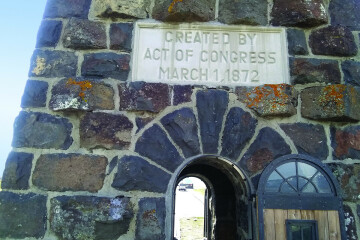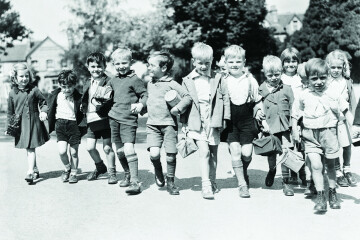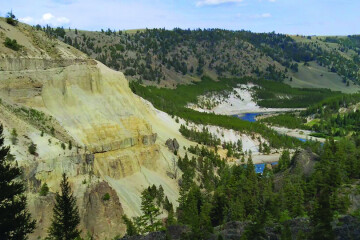Touring Yellowstone National Park in a Tin Lizzie
Touring Yellowstone National Park in the 1920’s by automobile was a spirited adventure in itself, especially if your touring vehicle was a 1920’s Model T Ford. The Model T was colloquially known by many during this era as a “Tin Lizzie.” Despite the labeling, it was a very popular and dependable vehicle for that timeframe. By the early 1920’s more than half of the registered automobiles in the world were Fords, and between 1908-1927, more than 15 million Model T’s were built and sold. So, if you decided to visit and drive in the park during the 1920’s, chances were pretty good that you would probably be driving a Model T Ford that had a four cylinder engine, a top speed of 40-45 mph, and a fuel economy of 13-21 mpg. The Model T was more than just a car. Customers transformed it into tractors to pull a plow, into fire engines, into snowmobiles with tracts in the rear and skis in the front, and even into a roving mobile church. The 1927 Model A replaced the long- standing Model T after 18 years of its having been on the market. 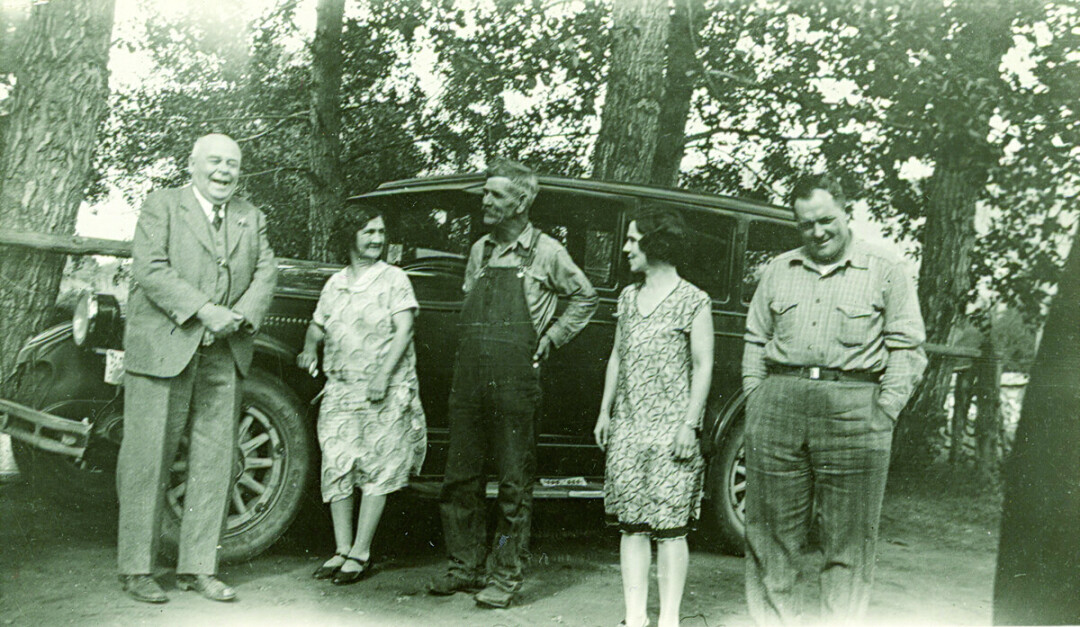
More expensive vehicles during the 1920’s also toured the park, but were fewer in number than the Model T Ford. Some of these may have included the 1926 Packard Twin, 1927 Willy’s Overland Whippet 93a, 1929 Hudson Roadster, 1920 Nash Touring, 1929 Cord, 1929 Studebaker Roadster, 1929 Duesenberg Model J, and possibly a 1920 Rolls Royce.
During the years from 1919-1929, North America experienced the rise of the Roaring Twenties. With the ending of WWI, the nation’s economic status, including employment gains, improved dramatically, paving the way for Americans to buy more automobiles, and to travel as never before. The savings from mass production of the Model T allowed the purchase price to decline from $780 in 1910 to $290 in 1924 ($5,156 in 2023 dollars). During the summer of 1920, some 5,000 cars flooded Yellowstone Park.
If you decided to drive a car in Yellowstone Park, you were required to stop at a park entrance ranger station and get a park permit that was good for the entire season and expired on December 31st. The cost of the permit was $7.50. Today’s automobile entrance fee, in contrast, is $35.
A second item of importance to purchase on your park visit during that time was a Yellowstone National Park Automobile Blue Book, which was a standard road guide to Yellowstone. This would cost you an additional ninety-five cents for the booklet, but was well worth the price for the detailed information it provided.
The Blue Book was informative, and covered essential items to take on your tour, which included tire and repair equipment and accessories. It also provided a detailed map and points of scenic interest in Yellowstone, four hotel and five campground locations, a 146.9 road mileage guide map providing one-way driving directions, information on park wildlife, and locations of stores, gas stations and park entrances. It offered additional information on driving restrictions, including speed limits, use of car horns, lights, muffler cut-outs, and the distances vehicles had to keep between each other. Interestingly, the Blue Book provided no information on bear and bison safety precautions for visitors, dangers of feeding wildlife, and, surprisingly, no information on the potential dangers of visiting thermal areas, nor restrictions on throwing items into thermal pools.
The Yellowstone Blue Book’s suggested List of Equipment and Accessories to take on the Yellowstone Park auto tour included 67 items one should seriously consider taking on the road trip. Tires were a major concern for travelers. Flat tires and blow-outs could take all of the fun out of a trip in the park. New tires purchased during this timeframe had a life expectancy of 2-3,000 miles, but during this period on the road, you probably would have removed and patched your tire tubes several times. Tire repair equipment recommended by the Blue Book to take on your Yellowstone tour included: two demountable rims with extra tires; two additional tubes in bags; two blowout patches; one blowout shoe; one brace to fit rim bolts; a good set of tire tools; tire and tube repair material and kit; air valves and caps; an air pressure gauge; talc for tubes; a hand tire pump or engine pump, and a dependable heavy duty car jack.
A roll of 12-inch chicken wire was also considered a priority item to take with you. On sandy stretches of park roads, drivers could anticipate getting stuck. If so, you would have to work the wire screen under the drive wheel and corresponding front wheel. That would provide sufficient traction to get you out of trouble. Deflating tires in such areas to provide more tire surface area and traction was also recommended.
The park roads also had rough stretches where your radiator could be damaged by a stone, which would result in a leak and a loss of water. Your repair solution recommended by the Blue Book was to take a bolt of sufficient size with a nut and a leather and metal washer at each end, and, after passing the bolt through the radiator opening where the leak was, tighten the nut. If you broke a car spring, a ball of heavy binder twine proved to be invaluable. After jacking the car up to sufficient height, you would then insert the ball of twine between the axle and the frame, which provided plenty of “give” to break the jar of a bump, enabling you to drive to the nearest repair station. On big hills and hot days, radiator overheating due to the lack of a water pump was also a problem. If this occurred, you could count on waiting a couple of hours for the radiator to cool down, allowing you to then add more water.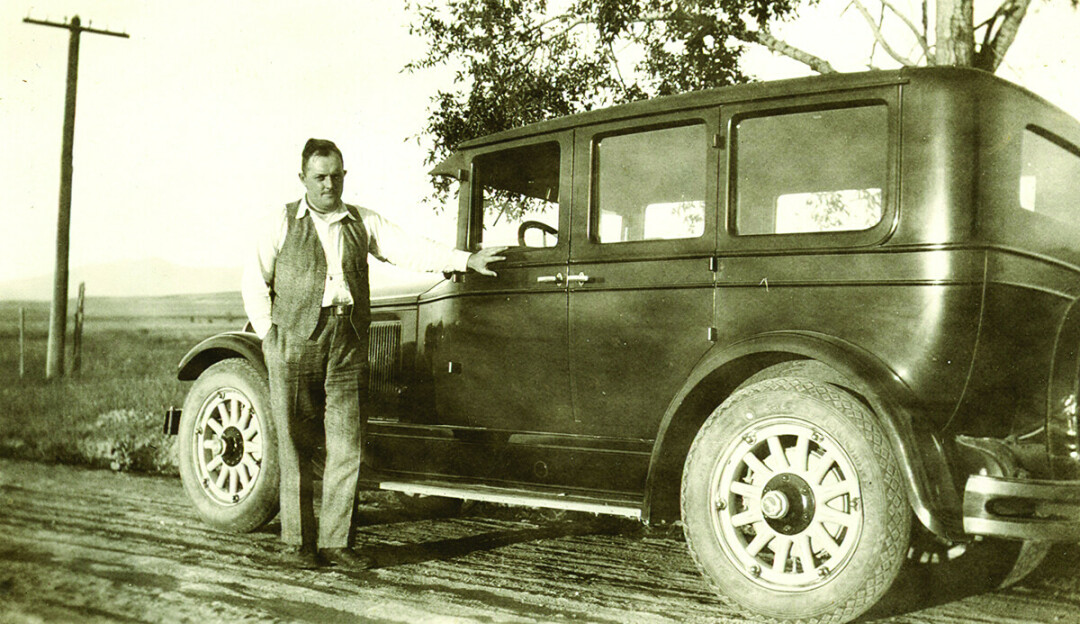
The early Model T’s had a 10 gallon fuel gas tank located under the front seat. Later models had the fuel tank installed on the firewall underneath the dashboard. The Model T did not have a fuel pump, and relied on gravity feed to send fuel to the carburetor. Driving up steep hills with pre-1924 Model T’s presented a real problem due to insufficient fuel reaching the carburetor. Drivers would then be forced to power the car up the hill backwards, in reverse gear. Such delays presented a major difficulty in reaching your campground or hotel destination for that day’s travel.
Having a major car breakdown on your tour presented a serious problem. The Blue Book provided no information on who to contact during an emergency. Phone service was available in the park at various locations. Calls cost 25 cents for the first minute, and 15 cents for each additional minute. Finding phone service, or help at your breakdown site could be difficult, and calling for an available towing service could also present a problem. The White Motor Service in the park did have service vehicles, and they probably offered towing services for vehicles stranded in the park.
The Blue Book provided the following information on wildlife: “The wild animal paradise contains 30,000 elk, several thousand moose, innumerable deer, many antelope, and a large, increasing herd of wild bison. There are two buffalo herds, one known as the tame herd, the other as the wild herd.” The wild herd was classified as a remnant population, a herd containing fewer remaining numbers of the enormous herds that used to fill the western plains. Information on current park bison numbers was not provided, and no explanation was given as to what “tame” bison meant. I was also curious to know how park personnel determined the Park’s elk and moose numbers at this early timeframe, especially when no aerial big game survey service was available, and the park service did not have any wildlife biologists to monitor wildlife activities.
Despite the limitations of auto road travel in Yellowstone Park during this early era, one would encounter few visitors in the park, and there were no vehicle-bear road jams to worry about. Traveling at a park speed of 25 miler per hour also provided additional time for visitors to enjoy the many extraordinary features the park offered, including hot springs, geysers, mud volcanoes, paint pots, the Grand Canyon of the Yellowstone, fossil forests, wildlife observations, and a wide variety of other scenic attractions. A tour of the park in a Model T Ford during the ‘20’s must have been an adventure in itself, one most visitors would have thoroughly enjoyed, especially if you could tour the entire 146.9 mile grand loop road without any flat tires, engine problems, or other car failures. If so, you could label yourself a happy camper.
Photos courtesy of Gallatin History Museum.



